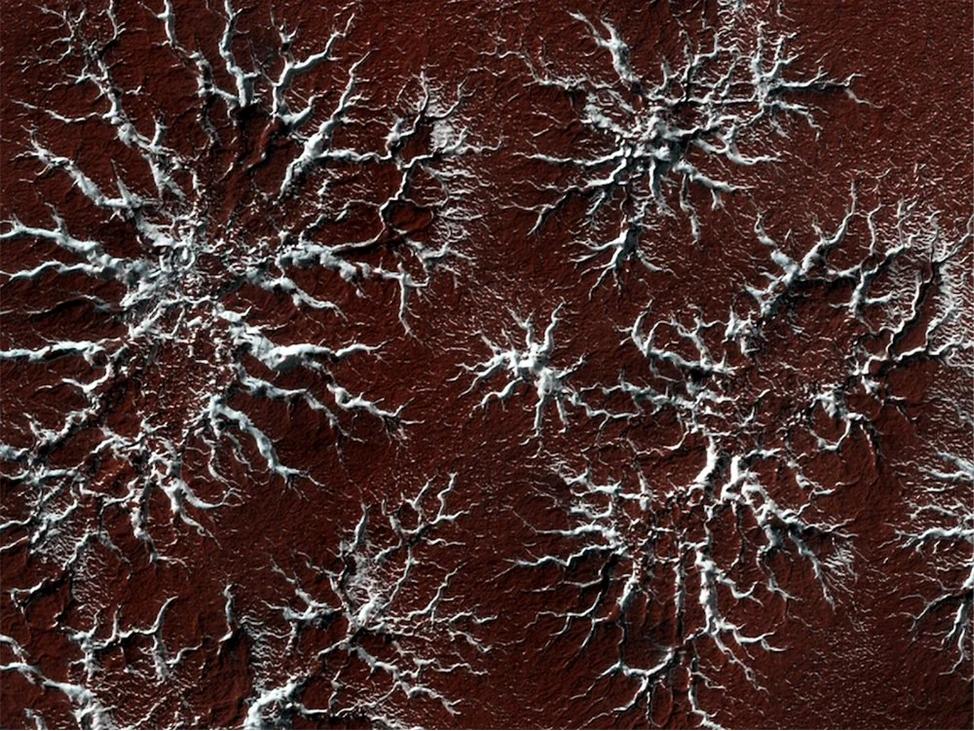
Above is an image of “dry ice spiders” on Mars. Every spring the Sun warms up the Martian south polar icecap and causes jets of carbon-dioxide gas to erupt through the icecap. These jets carrying dark sand into the air and spraying it for hundreds of feet around each jet forming these wonderful spider-like structures. Notice how they look very much like fractals.
Just for fun, and because I had a week off, I wondered if I could calculate, or really estimate the fractal dimension of these structures. To do this, I decided to use the box-counting dimension, which gives a bound on the fractal dimension. Rather than give a careful description here I will point to the following link.
I did this in a few stages using Mathematica. First I needed to get a form of the image that can be used.
The image of the left is what I then used as the fractal that I wanted to estimate the box-counting dimension of. The image of the right is the overlay of the original image and the “extracted” image. This shows that it is not perfect, but it will do for now.
Then I needed to write a Mathematica notebook that will give an estimate of the box-counting dimension. Of course, before I applied it to the spider question, I tested it on fractals with know fractal dimensions. It worked very well in general. Thus, I am confident that the estimate for the spider landscape is reasonable (modulo details of how I created the simpler black and white image).
So, what do I get for the box-counting dimension?
dimbox= 1.758 ± 0.013
Before anyone takes that figure too seriously, one should study many more of these spiders and see what range of values ones gets. Also the sensitivity to how I have “extracted” the fractal from the original should be tested. I have no idea if this has been done before or if it is interesting to anyone, like i said just for fun.

